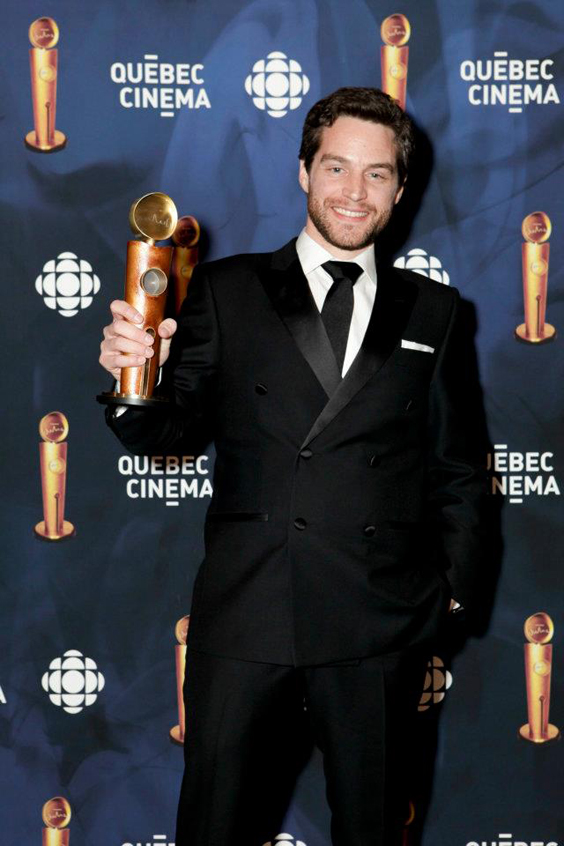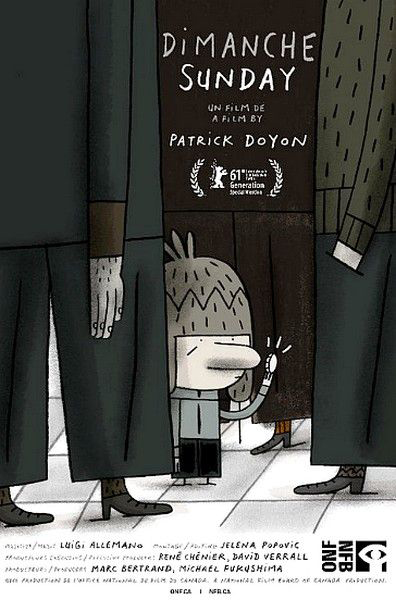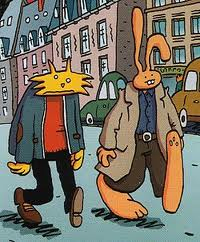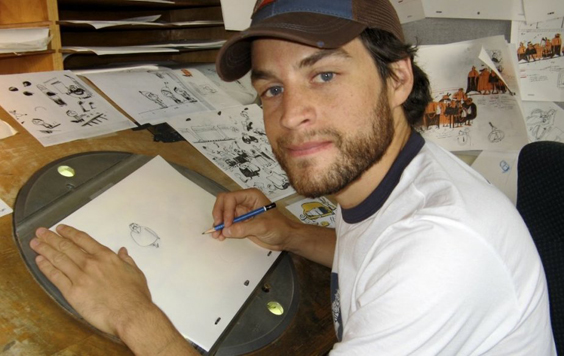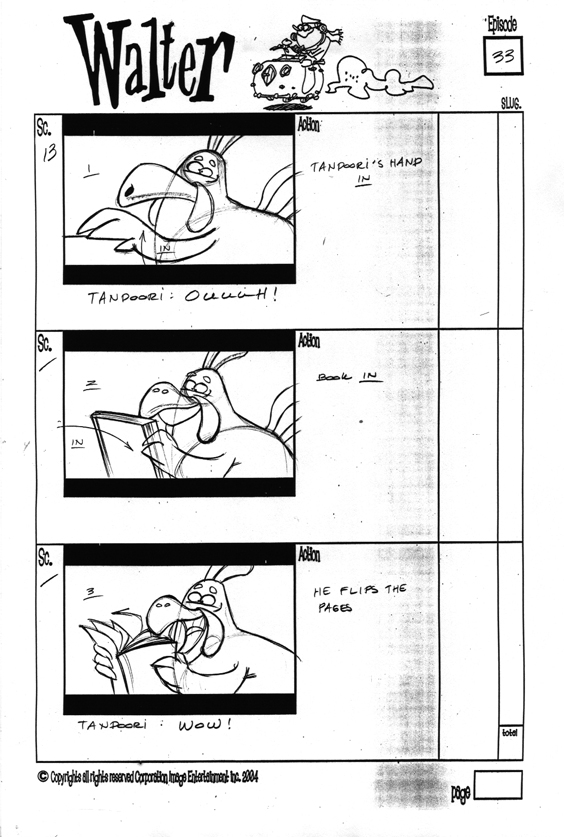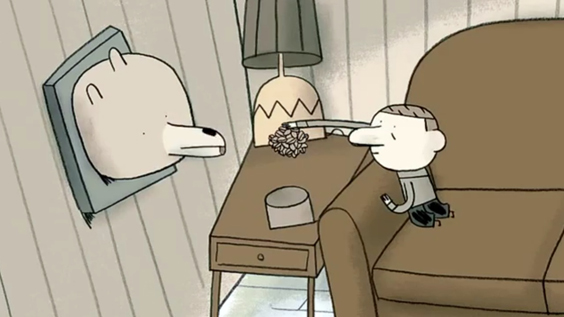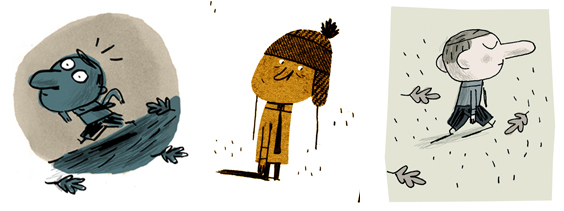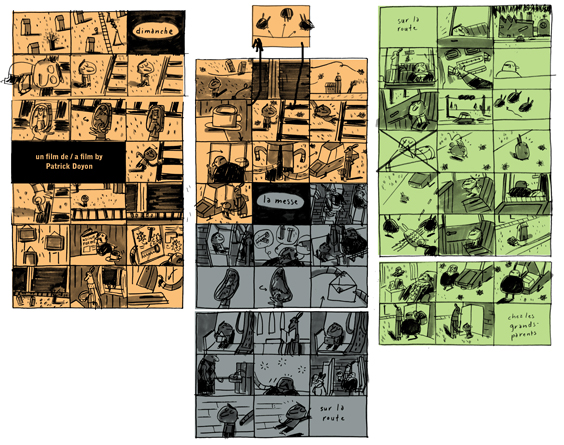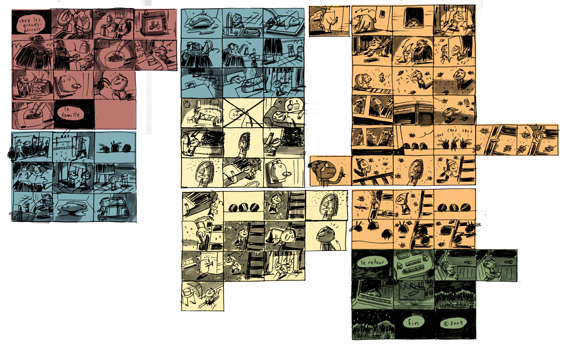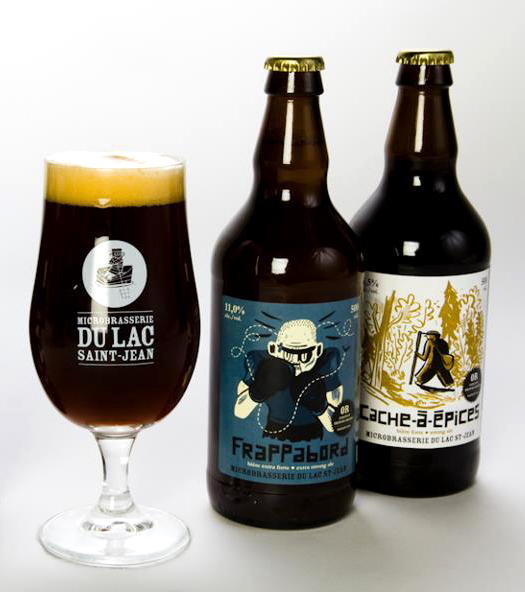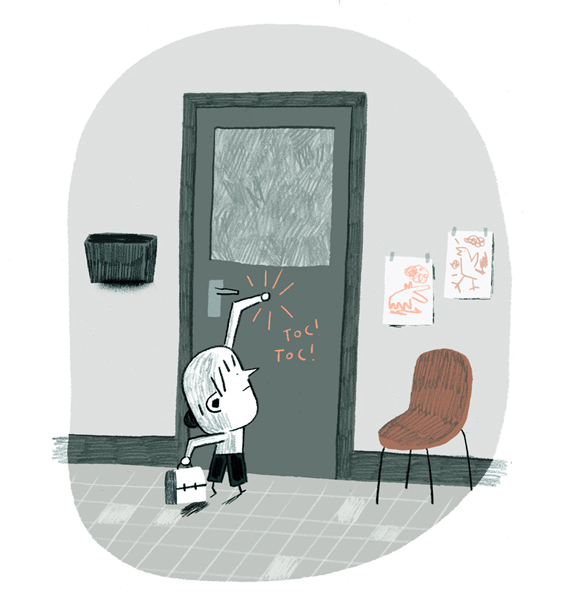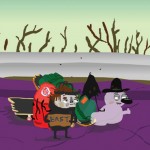AN INTERVIEW WITH PATRICK DOYON
AN INTERVIEW WITH PATRICK DOYON
conducted by Marc Lamothe
(translated by Adam Abouaccar)
Born in cialis from india Desbiens, Lac St-Jean in 1979, Patrick Doyon became interested in comics and animation at a very young age. In 2002, he directed his first short, 32:11. Soon after, he quickly received contracts for storyboard work and animation before directing another short film, Square Roots that attracted the attention of an NFB producer. His next film, Sunday, would bring him even greater attention. Premiering in Berlin in February of 2011, the short did the grand tour of many major festivals and earned him a nomination at the 84th Academy Awards. Although he did not win the Oscar, he went on to win the Jutra for best animated short as well as recognition from many major festivals in Europe and North America. Most notably, the film received a honourable mention at the Berlin International Film Festival, the prize for most inventive international film at the Odense International Film Festival and the ASIFA-Colorado prize for best animated short at the Denver Film Festival.
Patrick Doyon presented Sunday last year at the festival as part of Fantasia’s Outer Limits of Animation program. As he will be joining the Festival this year as a member of our animation jury, we lowest propecia price wanted to find out what animates this sensitive and reserved artist.
What came first? Your love for comic books or animation?
When I was really young, I loved reading Astérix and Tintin. They were the first books that I had access to. There was a little too much text for my liking but I adored the drawings and the way images could be used to tell a story. I reread Tintin later on when I was a teenager. Also when I was a child, on Saturday afternoons there was a program on Radio-Canada that would showcase cartoons, including episodes of Bruno Bozzetto’s Mr. Rossi. I loved the graphics, the movement, the humour. I also liked the cartoons from Eastern Europe that they would show – among others, Zagreb Film’s Professor Balthazar.
It was really here in Montreal that I first fell in love with European comics. There are more bookstores and libraries in Montreal, which meant that I had greater access. Books put out by L’Association, a French publishing house, were a real shock to me. It was through the work of Lewis Trondheim that I discovered this universe. I first started following his work on Lapinot published by Dargaud. I discovered a real sense of artistic freedom in the sleek black and white books that L’Association would put out. There were never page number constraints.
In 1998, you left Lac St-Jean to study Graphic Design here in Montreal. You directed your first film, 32:11, while you were still a student. What memories do you have from this period?
University was a somewhat rough path for me. I had considered industrial design, but I quickly realized that it wasn’t for me. So I opted instead for graphic design. Before then, I had never imagined that one could make a living by drawing. When I was doing my Bachelor’s, I took two complementary courses in animation, one of which was a storytelling course with Jean-Philippe Fauteux, who would really become my mentor. Even today, it’s always him that that I go to when I’m feeling unsure of something. It was at this point that I started to have a clear idea of what I wanted to do. I began an avid follower of the Dérapage events. Every spring, Dérapage, organized by UQAM School of Design students, offers a program of non-narrative audio-visual productions. The productions are under three minutes and the program always includes a healthy dose of experimental abstractions as well as an approach to sound based on noise.
It gave me the idea to create a short built around cycles of animation. I thought that this film could be widely different from the work screened at Dérapage due in part to its use of a more melodic approach to music. The film is a loop based on three animation cycles: a fish that is eaten by an always bigger fish, a sheep whose wool unravels constantly and a hammer that constantly bangs upon an egg. 32:11 was presented in 2002 at the third edition of Dérapage. From there it traveled to a few animation festivals, including ones in Ottawa and Zagreb. These two festivals made me discover the great pleasure of meeting other animators who have the same passion, the same tastes. It was a pleasure to discuss and exchange ideas with them.
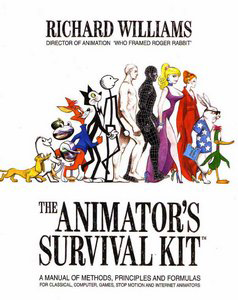 Is your instruction in animation limited to those two complementary courses that you took in University studying graphic design?
Is your instruction in animation limited to those two complementary courses that you took in University studying graphic design?
Yes. Academically, I haven’t taken other animation courses. One could say that my real schooling was Richard Williams’ book, The Animator’s Survival Kit: A Manual of Methods, Principles, and Formulas for Classical, Computer, Games, Stop Motion and Internet Animators. The author of this seminal book was one of the animators behind Who Framed Roger Rabbit? It was with this book among others that I learned the notions of timing, anticipation and movement. I also studied the films that Paul Driessen made for the NFB. I particularly like his film The Boy Who Saw the Iceberg. Even today, it’s one of my mains sources of inspiration. My viewing of Amanda Forbis & Wendy Tilby’s When the Day Breaks also had a lasting impression. And to think that we were both nominated this year for an Oscar, them for Wild Life and me for Sunday.
Between 2004 and 2005, you collaborated as a storyboarder and animator on a few animated series, including Walter (broadcasted on Radio-Canada and TV5) and Station X (thirteen 22 minute episodes that played on Teletoon). What memories do you have of these experiences?
I was about to finish my Bachelor’s when I came across an ad in Voir. A studio was looking for a junior storyboarder to work on storyboards here in Montreal. Walter recounts the adventures of an environmentally-friendly janitor and his hen. At first, my job was to clean the storyboards up, making the sketches neater. Overnight, I get paid to draw 40 hours a week. That’s really where I built up my confidence. It was a very formative experience.
My experience with Walter lasted eight months. Then the director asked me to work on Station X, his new animated/live-action series. Each episode is organized around a issue such as violence, madness or power, and presents a series of film clips or a capsule constructed around this theme. I was able to animate a number of sequences. My job was to visually illustrate some dialogues or explanations being narrated. I had a lot of freedom and it allowed me to refine my style and explore what could be done with animation.
In 2006, you get an emerging artist residency as part of NFB’s Hothouse, a paid apprenticeship program lasting 12 weeks designed for Canadian filmmakers. There, you direct Square Roots. How did you make the transition from television to a residency at the NFB?
I always loved the NFB. Already from a young age, I was fascinated by the film Neighbours by McLaren. I closely followed their calls for submissions. I sent them a film project that I made in 2006. It was a very naïve film, somewhat in the vein of Sunday, which was ultimately rejected. It’s probably a good thing in hindsight because it exposed me to the Hothouse program. Because I already had another project more or less ready to go, with storyboards already prepared, I submitted the project to them and it was picked up. My mentor was director Shira Avni. It was a stressful experience because filmmakers were usually expected to produce a film that was one minute long and I found myself with a film that was almost 3 minutes and only 12 weeks to do it. Overall, I’m quite happy with the finished product. It was within this context that I met producer Michael Fukushima (co-producer of Sunday) and composer Luigi Allemano (with whom I worked on the music for Sunday).
http://www.onf.ca/selections/hothouse/visionnez/square_roots/
In an effort to add some excitement to an otherwise boring family dinner on a Sunday afternoon, a child steps out for a moment to place a coin on the railroad tracks next to his house and waits patiently for the train to pass. Many have described Sunday as a film inspired by your childhood. How autobiographical is this film?
I’ve always been a lonely child. Unlike the boy in Sunday, I was not an only son, I had a brother and numerous cousins. However, I tended to sit alone on the couch and daydream rather than playing with them. What is autobiographical is Sunday Mass, the feeling of loneliness during family gatherings after church, my grandfather sleeping on the couch and the train that regularly passed by my grandparents’ house, making a huge racket. The rest is pure invention.
Speak to us a bit about the conception of Sunday.
It’s a film idea that I had during my Hothouse residency. I submitted it to the Cinéaste Recherché(e) contest in 2008. Unfortunately, I was not chosen, but Marc Bertrand, an NFB producer, strongly encouraged me to develop the project. The Script and character designs evolved over the following months. There have been several versions of the main character. It was really when I finally settled on a design for the boy that the aesthetics of the film and the look of the other characters took form. For example, at first, it was a caribou on the wall instead of a bear. The caribou is a reference to the coin but it was hard for me to design the caribou and make it look friendly. I finally opted for a bear that is a lot more fun. For me, it also acts as a reference to childhood, particularly because of teddy bears. It strengthens the idea of lost innocence at the end of the film. I was hesitant on how I was going to end Sunday. I wasted a lot of time listening to the conflicting opinions of people around me. It was finally the advice of Jean-Philippe Fauteux that proved to me most helpful.
The film was entirely drawn on my desk at the NFB. I used a 4B pencil and drawing paper. Within about 18 months, I managed to fill fifteen boxes with drawings and sketches.
I opted for sleek designs with few details for many reasons. If you’re repeating details on thousands of drawings, it’s best to keep everything to the point. I love simple lines, it’s due to my cultural influences and design background. Each drawing was scanned and coloured by computer. Happily, I got help for this part. I do a lot of animation tests before I go into production. After some of these tests, I decided to drop a couple of shots from the film.
The choice of having Luigi Allemano to do the soundtrack and sound design for the film was decisive. It’s difficult for animations to exist in silence. I met Luigi when I was part of the Hothouse project. I gave him a song by Yves Montand (Les feuilles mortes, I believe) as a musical reference. It was when he made me listen to a preliminary version of the musical piece written for the final sequence that I felt the film was taking on its own identity. I was fortunate in that I was allowed to enjoy considerable freedom across every stage of this project.
You quickly followed Sunday up with File no.4 – Life is a file, a ten-second film first projected at part of the Pictoplasma Festival in Berlin.
Sunday was the most demanding project I’ve made. After spending over two years on this film, I needed to tackle a project more immediate, more spontaneous. The idea for this film had been running through my head for 2 years and was originally designed according to the strict rules of Minimotion 2010, a competition for films lasting 10 seconds which explores the link between simple illustration and the animation of few drawings. I loved my time at Pictoplasma. It’s a festival that I recommend to everyone. Every day of the festival features lectures and workshops presented by internationally renowned artists.
Along with your career in animation, you spend a lot of your time as an illustrator and graphic designer. Some of the beer labels that you created for the Microbrasserie du Lac St-Jean have won gold medals at the 2011 Canadian Brewing Awards. You’ve won LUX awards in 2009 and 2011 for your drawings published in Urbania and L’Actualité. How would you compare your work as a graphic designer to your work as an animator?
Animation is the art of evoking a story with several drawings, the challenge of working as an illustrator is to illustrate a concept or text in a single image. So, when I animate, I miss the spontaneity of illustration and when I work on a design contract, I miss the continuity attached to the animation process. The fact remains that the graphics and illustration work that I do allows me to live between films. I like to leave some time between each film, to take in the experience and cleanse myself before diving right back in.
You’re currently working as an illustrator on Le voleur de sandwiches, a children’s book written by André Marois for the La Pastèque publishing house. What can you tell us about this project?
I’m very fortunate to be working with La Pastèque. I love their body of work. We’re talking about a series of 50 illustrations. It tells the story of a young boy who gets his homemade lunch stolen. He decides to investigate and track down the culprit. Graphically, I would say that it’s along the same lines as the design of Sunday. The people over at La Pastèque have been patient with me.
What are your next projects?
I’m meditating on my next animated film. I am looking to develop a film around the theme of intergenerational determinism. I feel that we do things or react to certain situations based on our upbringing, the influence of our parents and our genetic baggage. I don’t know where I’m going to go with this yet. A friend and I want to develop a book for the iPad. It’s still in its early stages. We’re brainstorming right now.

 June 1, 2012
June 1, 2012  No Comments
No Comments
